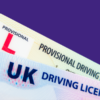
So, you’re thinking about becoming a driving instructor? Perhaps the thought of a 9-to-5 grind makes you want to hide under the duvet, or maybe you’re just itching for a career change that doesn’t involve staring at a computer screen all day. Well, let me tell you, swapping the office chair for the driver’s seat might just be the best decision you’ll ever make. But before you ditch your day job and start dreaming of life on the open road, let’s break down what it really takes to become a driving instructor.
The Essentials – Getting Started
First off, let’s get the formalities out of the way. To even think about becoming a driving instructor, you need to meet a few basic requirements. You must be over 21 years old, have held a full driving licence for at least three years, and have a relatively clean record—no more than 5 points on your licence, and definitely no bans in the last four years. Simple enough, right? Oh, and there’s a DBS check too—because teaching people to drive is a serious business.
Beyond Driving – The Skills You’ll Need
Now, if you thought being a driving instructor was all about knowing how to parallel park like a pro, think again. Sure, being a great driver is important, but what really sets the best instructors apart are their soft skills. Remember those teachers in school who made even the dullest subjects interesting? That’s the vibe you need to bring into the car.
You’ll need patience (and lots of it), adaptability, and the ability to communicate in a way that makes even the most nervous learner feel at ease. If you’ve got the gift of the gab and a knack for explaining things clearly, you’re already halfway there. Plus, let’s be honest, if you’ve ever kept your cool while trying to teach a mate how to reverse into a parking spot, you’re more prepared than you think!
Business Know-How – Running the Show
Here’s the thing they don’t tell you in all those shiny brochures: being a driving instructor isn’t just about teaching people to drive; it’s about running a business. Whether you join a franchise or go solo, you’re essentially self-employed. That means managing your own diary, keeping track of your earnings, and sometimes working those unsociable hours to build up your reputation. It’s not just about driving; it’s about making the business of driving work for you.
And don’t worry, you don’t need to be a financial wizard to succeed, but a basic understanding of how to manage your accounts and market yourself will go a long way. If you’ve got a bit of entrepreneurial spirit and you’re not afraid of a little hustle, then you’ll be just fine.
The Road to Qualification – Training and Exams
Okay, so you’re sold on the idea and think you’ve got what it takes. What next? Well, buckle up, because you’re going to have to pass three exams to become fully qualified. These are your ADI Part 1 (theory test), Part 2 (practical driving test), and Part 3 (instructional ability test).
The theory test is pretty straightforward if you’re willing to put in the study time. The practical test, though? It’s more rigorous than the one you took to get your licence, so you’ll need to polish those driving skills until they shine. And the instructional ability test? That’s where you prove you can actually teach someone to drive without losing your cool.
Here’s the kicker—these exams aren’t easy. The pass rates hover around 55% for the practical and just 37% for the instructional ability test. But don’t let that scare you. With the right training and a bit of grit, you can get through it. Plus, think of how sweet that green ADI badge will look on your dashboard. When you finally get it, there’s no feeling like it.
The Rewards – What’s in It for You?
So, what’s the reward for all this hard work? Well, apart from the satisfaction of teaching a life-long skill and watching your students pass their tests, there’s the financial side. A full-time driving instructor can expect to earn upwards of £40,000 a year, with the flexibility to work as much or as little as you like. That’s not too shabby, especially if you’ve been stuck in a job with no real earning potential.
However, the reality of earnings can vary depending on how you choose to operate. If you go solo, you might keep more of your earnings but bear in mind the costs for things like your vehicle, insurance, and marketing. On the other hand, joining a franchise or a larger driving school might mean forking out a chunk of your income on franchise fees, car leases, and other expenses. It’s essential to do your homework before signing up with a school—some, like Shift Driving School, offer competitive very rates and more localized support, which can make a huge difference.
If you’re considering the pink licence route (a trainee licence), you’ll need an ADI to sponsor you while you’re still training. This allows you to start earning and gaining practical experience before fully qualifying, which can be a huge advantage—but again, it’s important to choose the right sponsor or school to ensure you’re getting the support and guidance you need.
And let’s not forget about the work-life balance. No more being chained to a desk from 9 to 5. You’re in control of your own schedule, which means more time for the things you love outside of work.
Are You Up for the Challenge?
Becoming a driving instructor isn’t a walk in the park, but it’s also not the Herculean task some might make it out to be. If you’ve got the right mix of driving skills, people skills, and a bit of business acumen, there’s no reason you can’t make a successful career out of it.
So, if the idea of spending your days helping people gain their independence behind the wheel appeals to you, then what are you waiting for? Start your journey today—you never know, you might just find that teaching others is the drive you’ve been looking for.











